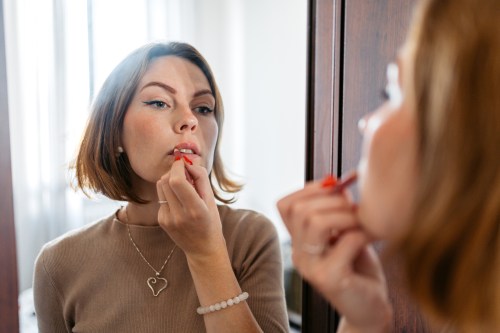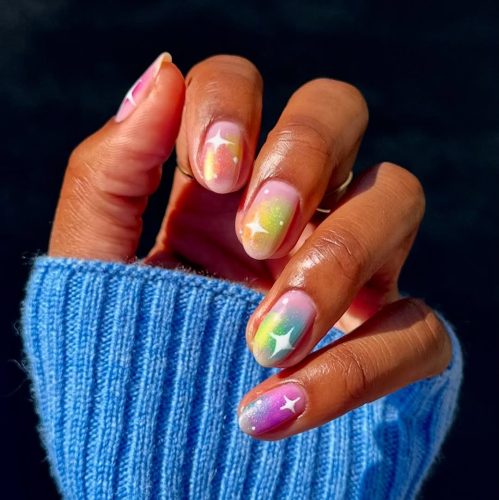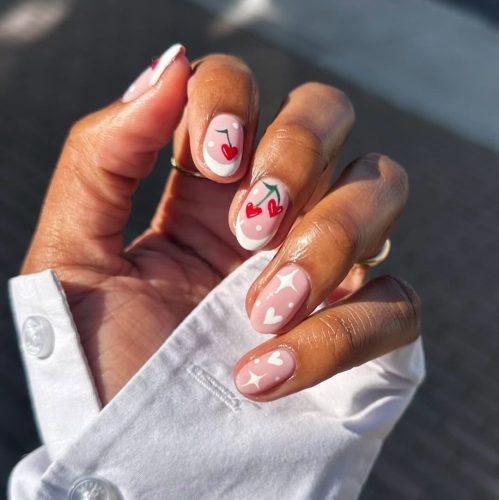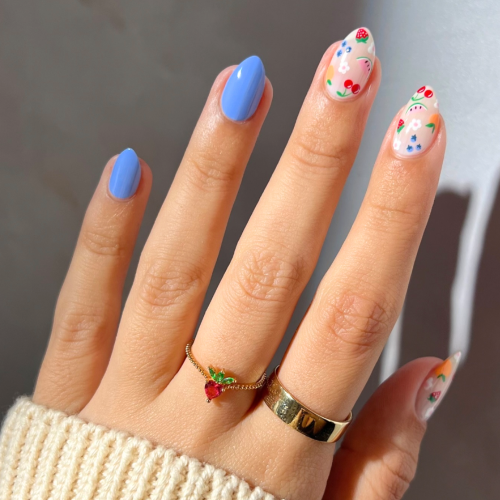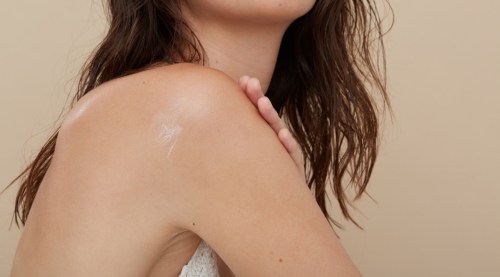The Latest Olaplex Controversy Is a Reminder That You Can’t Believe Everything You Read on the Internet About Beauty
The recent scare that Olaplex could cause infertility highlights a need for increased skepticism when it comes to ingredient fear-mongering.

When a ban against lilial, a fragrance used in cosmetics that has been tied to infertility in rats, went into effect on March 1, the Internet freaked out. Olaplex No. 3, one of the darlings of the hair-care industry, was found to have lilial among its ingredients, and people overwhelmingly concluded that Olaplex could cause infertility. But the hard facts of the situation are quite a bit different than what you may have seen swirling on social media.
Experts in This Article
board-certified dermatologist in New York City
Sydney, Australia-based cosmetic chemist
“This ingredient was investigated by the European Union safety assessors several times, and in May 2019, they declared that it was not safe,” says Michelle Wong, PhD, a cosmetic chemist based in Sydney, Australia. “However, ‘not safe’ doesn’t mean ‘dangerous.’ It means it can’t be guaranteed to be safe. So there’s a gray area in between safe and dangerous.”
The recent controversy surrounding Olaplex (which we’ll dive deeper into in a minute) speaks to a larger trend in “clean” beauty, in which products are often persecuted without being given a chance for a fair trial. As a result, products we never thought twice about using are suddenly scrutinized and feared, often without proper research to back up the backlash. There’s nothing wrong with being a mindful consumer and wanting to learn about what’s in the products you’re using (in fact, that’s a good thing)—but you need to be wary of where you’re getting your information.
“A lot of the commonly fear-mongered ingredients that clean beauty brands talk about—like parabens, sulfates, Phenoxyethanol—these ingredients are still on the market because they are actually safe,” says Dr. Wong. “Often, sources that claim these ingredients are unsafe are relying on grossly misinterpreted data. Whereas with actual safety assessments with actual toxicologists who know what they’re doing, they will put these studies into context.”
Understanding ingredient regulation
A common refrain among clean beauty lovers is that the EU has banned far more ingredients from cosmetics than the United States. And that’s true—the EU has banned over 1,300 chemicals from cosmetics compared to just 11 banned or restricted by the Food and Drug Administration (FDA). The EU’s number is so large, in part, because it includes ingredients that would never be put in a cosmetic.
“Some of the things that are banned are radioactive materials and jet fuel,” says Dr. Wong. “They’re things that no non-super villain person would ever put into beauty products. There are a handful of ingredients that are banned in the EU but not the U.S. that are commonly used in beauty products. But those are in that gray area where arguably, they could go either way with the safety. It’s like a genuine difference of opinion between scientists.”
An example of this is parabens. Parabens are preservatives that some regard as endocrine disruptors. Five types of parabens have been banned in the EU, while others are strictly regulated. However, the FDA does not have any such regulations and states that it does “not have information showing that parabens, as they are used in cosmetics, have an effect on human health.” Still, many beauty brands have removed parabens from their formulas to keep customers happy.
Something similar has happened in the realm of deodorants. In recent decades, research suggested that aluminum (which is used as the main ingredient in antiperspirant thanks to its sweat-blocking abilities) may potentially be an endocrine disruptor, and could be linked to breast cancer. However, the American Cancer Society has repeatedly said there’s no cause to worry, because research has shown only a minuscule amount of the aluminum compounds are absorbed into the skin when you apply antiperspirant. Yet natural deodorant brands have continued to market aluminum-free products as a “safer” alternative.
The main issue with ‘clean’ beauty
Clean beauty was born out of increased interest from consumers who wanted to know what is in their products. “There has been a shift a bit in the industry, where they realized that women are intelligent and want products that work and they want to understand what’s going on behind them,” says Dr. Wong. Google searches for clean beauty started climbing in 2012, and in the years since, consumers have become increasingly enamored by the prospect of “clean” products. However, “clean” is a term that’s unregulated, so it doesn’t have a concrete meaning. “It is almost completely marketing,” says Dr. Wong. To some, it might mean formulas that are free of additives like fragrance. For others, it might mean primarily plant-based formulations.
Reliance on “clean” as a metric is even something we’ve been guilty of perpetuating here at Well+Good in past coverage, though our tune has changed with the emergence of new research. Over the course of this massive clean beauty push, Dr. Wong says consumers haven’t benefited nearly as much as they may have hoped.
“Cosmetic chemists are getting a lot more work because brands are trying to reformulate their products to be ‘clean’ every time there’s like a new ingredient that’s been fear mongered about,” says Dr. Wong. “There’s been a lot of phasing out of ingredients that are perfectly safe. And so, a lot of ingredient manufacturers have had to make alternatives to old ingredients. And so they’re spending all their time and effort replacing these things that didn’t need to be replaced instead of maybe researching more effective ingredients for our skin.”
But that’s not to say ingredient skepticism isn’t helpful. For example, we’ve seen a rise in sulfate-free shampoos because consumers, primarily women of color, reported that this ingredient was too drying for their hair. Now, we have tons of sulfate-free options on the market so everyone can find a shampoo that works for them. But even so, sulfates aren’t dangerous, and many people can tolerate them in products.
We’ve also seen a departure from heavily fragranced products. Whether natural or synthetic, fragrance is one of the most common irritants in skin-care products. So having more fragrance-free products allows people with more sensitive and reactive skin to navigate the skin-care industry with a bit more ease, but it doesn’t mean that everyone needs to stay away from fragrance.
Additionally, this has led to a rise in ingredient transparency among brands. When browsing skin-care products online (either from individual brands or big retailers like Sephora) you’ll always see a breakdown of what the main ingredients do. And some brands like Isla and Uni Beauty take this a step further, explaining what percentage of their formula their main ingredients comprise, a clear breakdown of why each product costs what it does, and more.
The recent Olaplex controversy is a prime example of ingredient misinformation
The recent uproar about Olaplex is a prime example of ingredient confusion perpetuated by social media. The European Union chose to ban lilial, also known as butylphenyl methylpropional, based on a report that examined its reproductive toxicity in mice, rats, and dogs. Rats were the only ones out of the group found to have a sensitivity to lilial, so to follow the worst-case scenario, it was assumed that humans could be as sensitive as rats. The rats ingested lilial, and researchers converted the findings to see what the impact would be if the ingredient was applied to human skin.
“They calculated what would happen if you used 15 different products with lilial every day,” says Dr. Wong, “and they found that you still get 1/80th of the amount of lilial that would be expected to cause a negative effect in rats.”
The Cosmetic, Toiletry and Perfumery Association (CTPA) states that the current EU ban, and a similar ban expected to follow in Great Britain, “is based on the hazardous properties a substance might have under a ‘worst-case’ situation and does not take account of whether there is any risk associated with specific uses or exposures. Consumers who have bought cosmetic and personal care products that contain [lilial] can be reassured that these products are still safe to use. They will have undergone a rigorous safety assessment by an expert safety assessor to ensure their safe use.”
Translation: Though ingesting massive amounts of lilial may cause infertility, anyone using Olaplex doesn’t need to worry about these “worst-case scenario” effects. Plus, when the EU formally announced this ban in September 2020, Olaplex proactively removed lilial, meaning the ingredient has not been included in Olaplex No. 3 formulation for months.
“Olaplex takes the health of our consumers and regulatory compliance seriously,” an Olaplex representative tells Well+Good. “We are saddened by the millions of people who have been mentally stressed from the inaccurate narrative on the lilial phase-out.”
What happens when a product is actually unsafe
Olaplex’s decision to remove lilial from its formula speaks to a simple, industry-wide truth: Brands don’t want unsafe products on the market. We saw this with the Honest Company in 2017, when the brand’s baby wipes were recalled due to possible mold contamination, and when Herbivore Botanical issued a similar recall in 2019 due to mold in a face cream.
“Those [products] were under preserved. They were actually unsafe. They were causing infections, and there were recalls issued,” says Dr. Wong. “Beauty companies are meant to have recall procedures, in case something like that does happen because ingredients get contaminated, mistakes happen in manufacturing. Companies are generally ready to recall products if they think actual human harm may happen.”
Additionally, Johnson & Johnson recalled five aerosol sunscreens in June 2021 after trace amounts of benzene, a carcinogen that’s banned as an ingredient in products intended for use in the home, were found in the products. Benzene wasn’t used as an ingredient and arose as a byproduct during formulation. The amount of benzene wasn’t high enough to cause harm and benzene is something that we’re all exposed to regularly through things like the air we breathe and soft drinks. But, cutting down exposure in any way is beneficial, so J&J’s decision was a step in the right direction.
These recalls demonstrate that it’s not in a company’s best interest to put out harmful products.
“We live in a capitalist society, and so everything comes back to profit. And if your customers are dead or harmed by your products, you don’t get a profit,” says Dr. Wong. “It’s completely understandable that people suspect that their products might not be as safe as possible because corporations do not necessarily have our best interests at heart because they just want to turn a profit. But even if you come at it from that perspective, it still doesn’t make sense to make dangerous products.”
How to be an informed shopper
When things like this lilial scare pop up on social media, Elyse Love, MD, a board-certified dermatologist based in New York City, says it’s important to consider your sources.
“What I see a lot of in social media is that either data is taken out of context or data is manipulated,” says Dr. Love. “I’m not telling people that they can’t be proactive, they can’t be interested, they can’t learn. But I do think that sometimes, it’s helpful just to remember that data interpretation is complicated. It’s not that you just look at this number and this number, and then you automatically understand.”
As a consumer, you want to shop in a way that aligns with your priorities. And if being mindful about ingredients is among them, carry forth. But the next time a new beauty ingredient ends up in the hot seat, it’s worth doing the extra digging to find out whether or not it’s legit. Then, you can let that information guide you, and choose your products accordingly.
Oh hi! You look like someone who loves free workouts, discounts for cutting-edge wellness brands, and exclusive Well+Good content. Sign up for Well+, our online community of wellness insiders, and unlock your rewards instantly.
